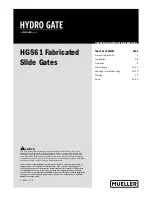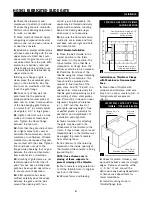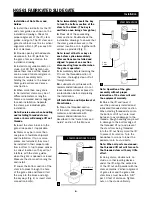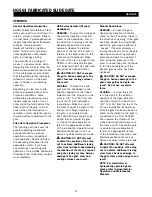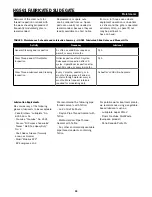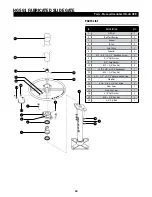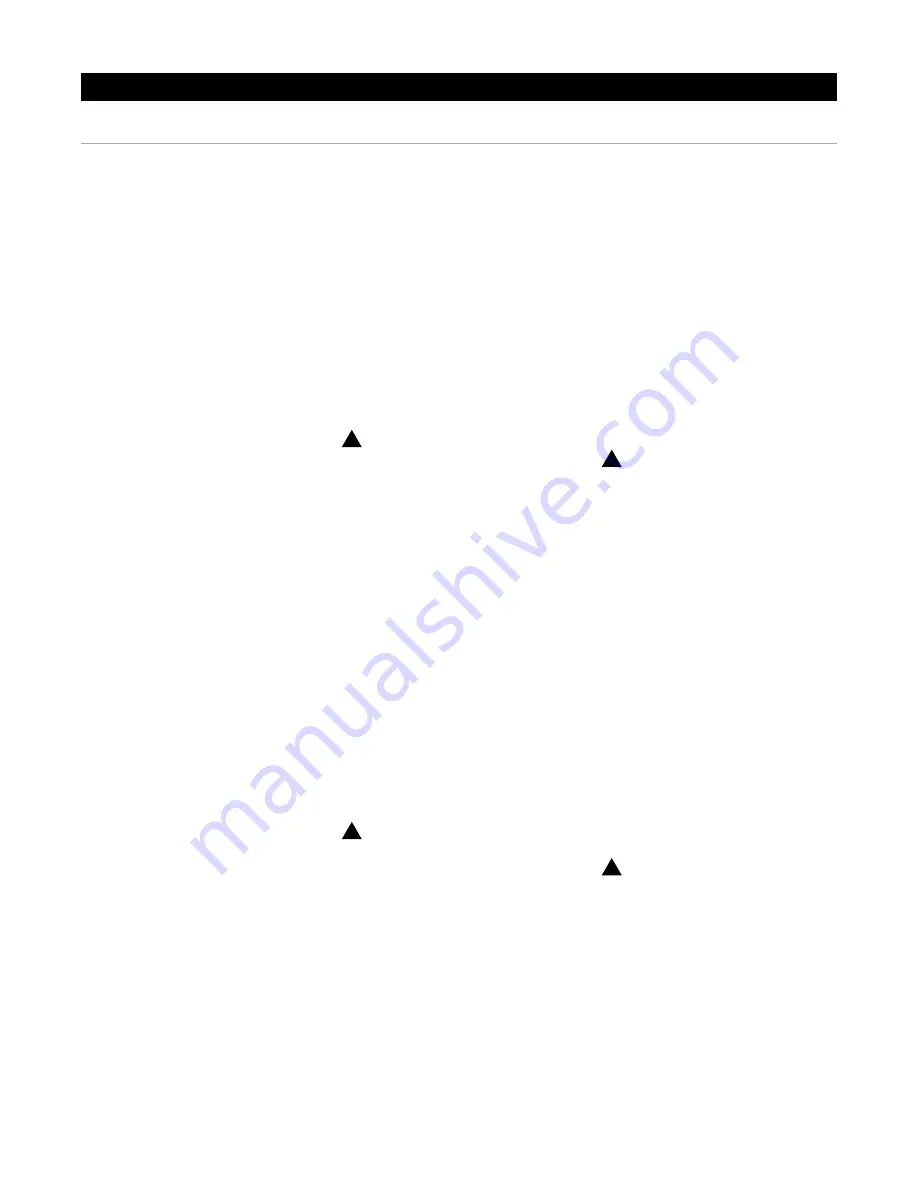
9
HG561 FABRICATED SLIDE GATE
Operation
General Operation Information
HG561 Fabricated Stainless Steel
Gates are used to control flow of or
retain a volume of water, effluent,
or other fluids. Typical applications
include industrial water treatment
facilities, municipal water
treatment facilities, irrigation,
dams, flood control, and many
other applications that require
tight, low leakage closing.
The simplicity of a slide gate
makes it a popular choice when
designing flow controls. From the
basic hand-cranked manual model
to the microprocessor-controlled,
fully integrated electric slide gate,
actuation consists of the basic
open or closed, or modulating
operation.
Depending on size, most slide
gates can operate without error
in diverse conditions. Some
extenuating circumstances may
include large amounts of ice or
other solids that will obstruct the
travel path of the gate. In most
cases, when the obstruction is
removed, normal operation can be
resumed without adjustment to the
gate.
Slide Gate Operation Procedures
The following sections cover the
general operating procedures
associated with two manual-
operation systems (handwheel
and handcrank). Read and follow
the operating procedures for the
applicable system. If you have
any questions concerning safe
operation of this HG561 Fabricated
Stainless Steel Slide Gate, contact
us immediately.
H2B Series Actuator (Manual
Handwheel)
OPENING
– To open this slide gate
observe the direction of rotation
noted on the handwheel. Turn in
the direction of opening until the
desired gate position has been
achieved. Observe the relative
position of the top of the stem in
relation to the Mylar decal on the
stem cover (if equipped.) When
the top of the stem is equal to the
OPEN or 100% indicator the gate
is considered to be FULL open and
should not be opened further.
CAUTION: DO NOT over-open
the gate. Serious damage to the
gate stem and sealing surfaces
can result.
CLOSING
– To close this slide
gate turn the handwheel in the
direction opposite of the “Open”
indicator until the stop nut on the
stem is 1/8" to 1/16" from the
top of the lift (see installation
instructions). When the top of
the stem is equal in height to the
bottom/ zero height indicator,
the gate is considered to be
FULL CLOSED and should not be
closed further. Should the gate
or stop nut require adjustment,
refer to the appropriate section
of the Installation, Operation, and
Maintenance Manual or call us
before any adjustments are made.
CAUTION: DO NOT attempt
to adjust the position of the stop
nut to achieve additional closing
stem travel without understanding
the function of the stem, stop nut
and gate closing system. Serious
damage to the gate stem and
sealing surfaces can result.
Manual Hand-Crank
OPENING
– To open this gate
observe the direction of rotation
noted on the lift housing. Crank in
the direction of opening. If the gate
has been closed for an extended
period the gate may be difficult to
“unseat.” If several attempts at
turning the wheel to crack the gate
open have no result, apply heavy
pressure and wait for a period of
time. Allow the pressure in the
stem to unseat the gate. Continue
to turn the handcrank until the
desired gate position has been
achieved.
CAUTION: DO NOT over-open
the gate. Serious damage to the
gate stem guides and gate can
result. Do not use excessive
force.
CLOSING
– To close this gate
turn the crank in the direction
opposite of the Open indicator
until the stop nut on the stem is
1/8" to 1/16" from the top of the
lift (see installation instructions).
After the gate has been closed as
noted on the indicator, the gate is
considered to be FULL CLOSED.
Then reverse the rotation of the
crank and relieve the pressure on
the stem and lift. Should the gate
or actuator require adjustment,
refer to the appropriate section
of the Installation, Operation, and
Maintenance Manual or call us
before any adjustments are made.
CAUTION: DO NOT attempt
to adjust the position of the stop
nut to achieve additional closing
stem travel. Serious damage to
the gate stem guide and gate can
result.
NOTE: For electrically or
hydraulically operated gates
please refer to manufacturer
Operation and Maintenance
Manuals.
OPERATION
!
!
!
!

